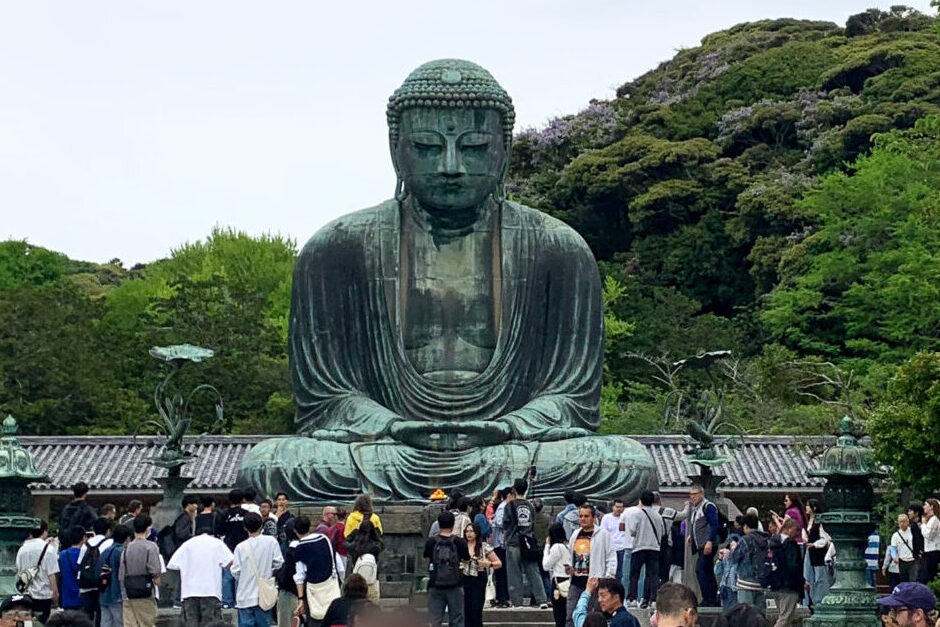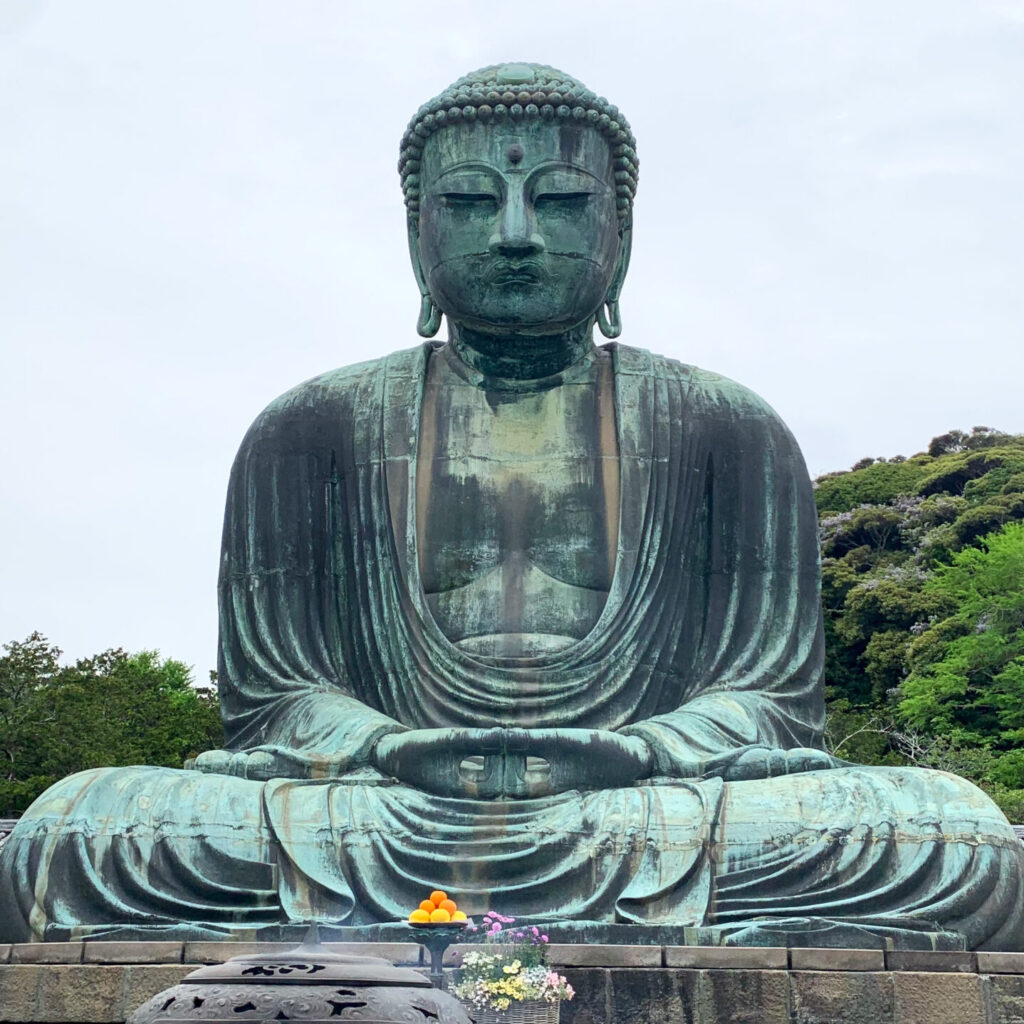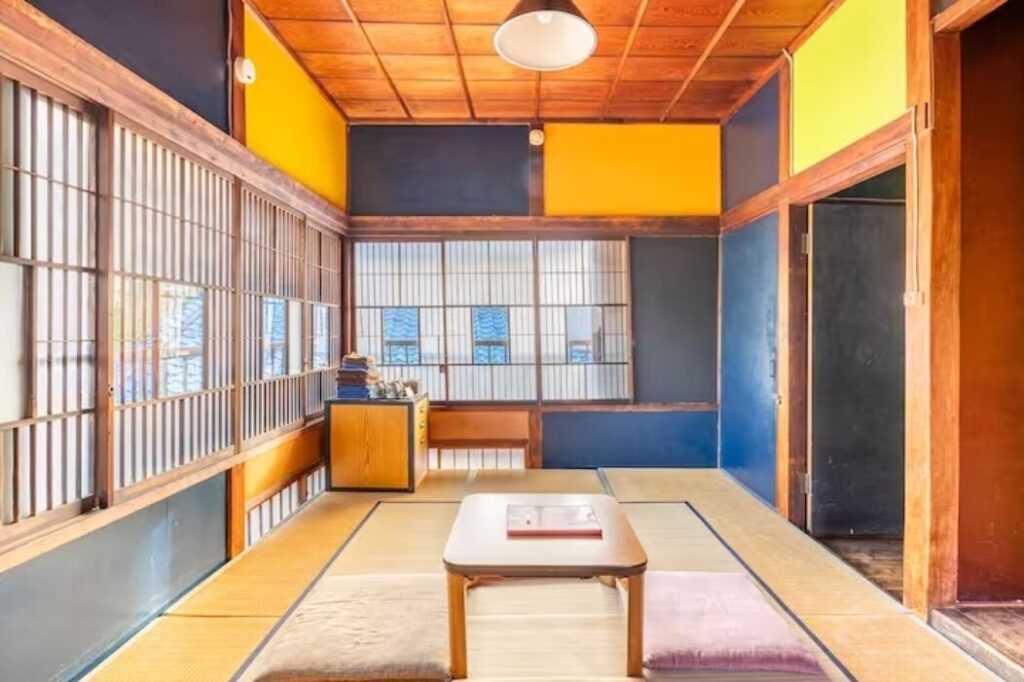
Let me tell you about a pretty special town, Kamakura.
Just hop on a train and head south from Tokyo—about an hour—and you’ll hit a place packed with history and culture. For Japanese, the Shonan Coast might be more familiar than the name Kamakura, but hey, both are part of what makes Kamakura awesome.
Go say hi to the good-looking Great Buddha and soak up that Shonan breeze.

A. Start Walking from JR Kamakura Station
Today’s strolling around Kamakura starts at the heart of the town, JR Kamakura Station on the JR Shonan-Shinjuku Line (marked as A on the map).
Just take the JR Tokaido Line from Tokyo Station or Shinagawa Station, to Totsuka Station, then switch to the JR Shonan-Shinjuku Line—it’ll take you straight to Kamakura Station!
Since the Enoden Kamakura Station is right by JR Kamakura Station, it’s easy to get around—this area makes a great starting point for exploring.
B. Ugafuku Shrine of Benzaiten, Goddess of Wealth – A Mystical Shrine with Worldly Benefits
Ugafuku Shrine (marked as B on the map) is known for bringing worldly benefits, but there’s something mysteriously captivating about it.
In 1185, when the era of the Samurai began under Minamoto No Yoritomo, it’s said that he founded this shrine after receiving a divine message in a dream.
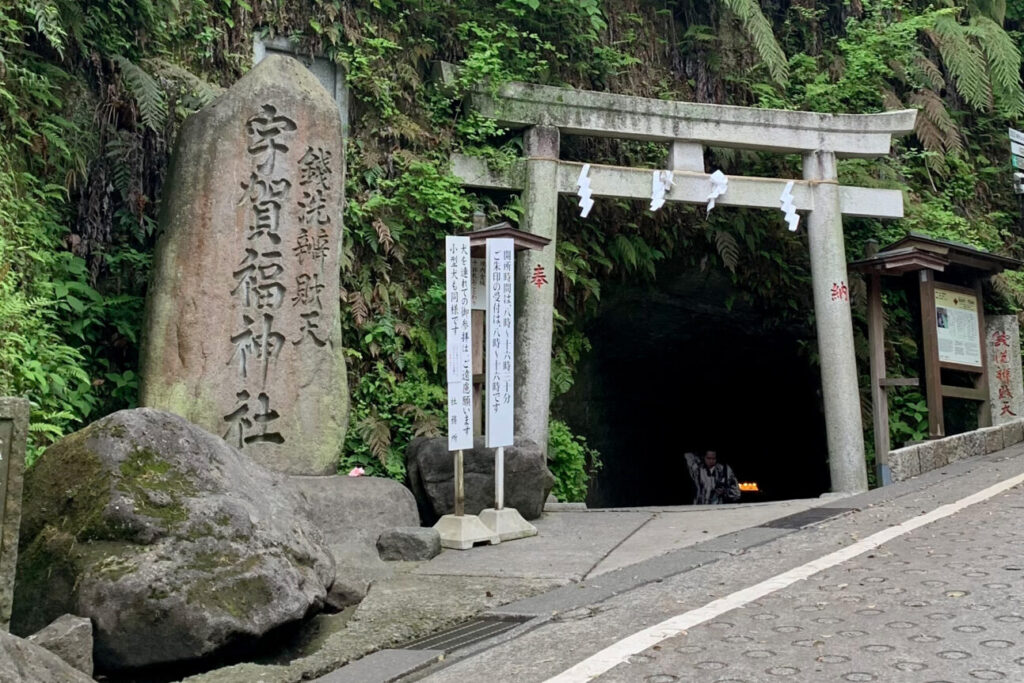
The path leading to the shrine is carved through the rocks, and as you walk through it, you can’t help but feel like you’re being taken to another world.
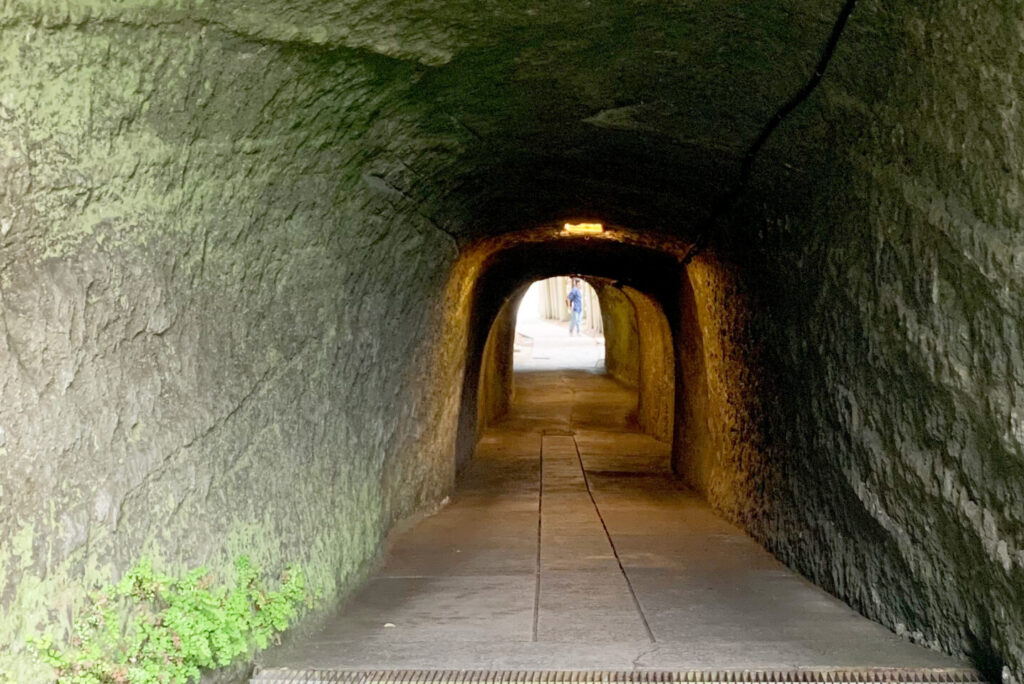
At this shrine, you can wash your money with the cool spring water that flows on the grounds. It’s said that when you spend that money, it will come back to you many times over.
You can enjoy the mystical world carved into the rocky cliffs, or wish for practical blessings—either way, isn’t this Deity (Kami) incredibly open-hearted?
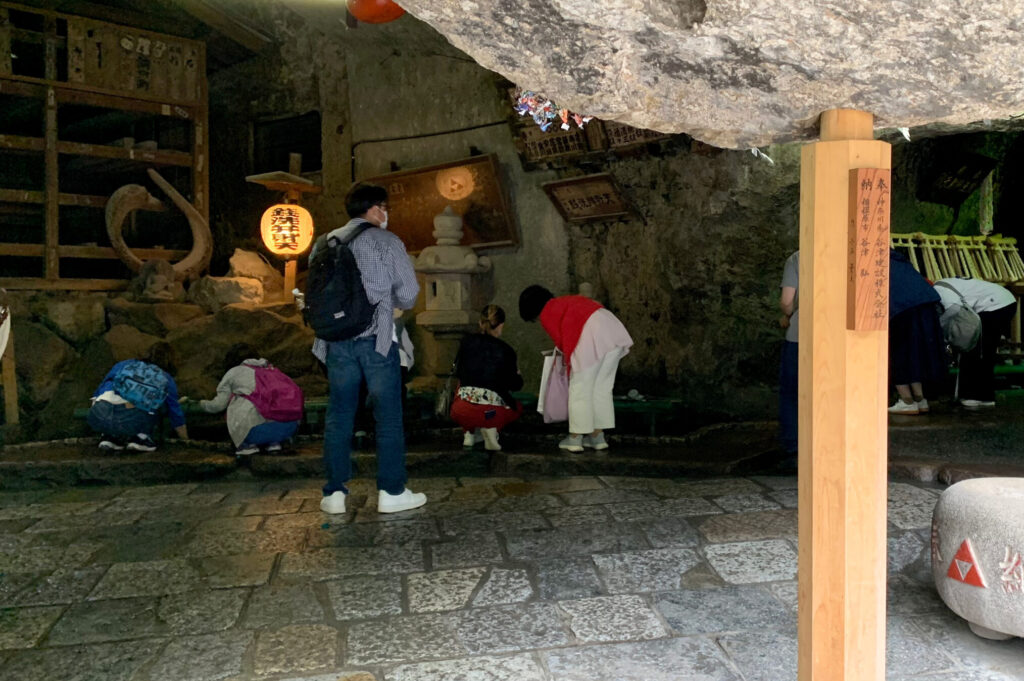
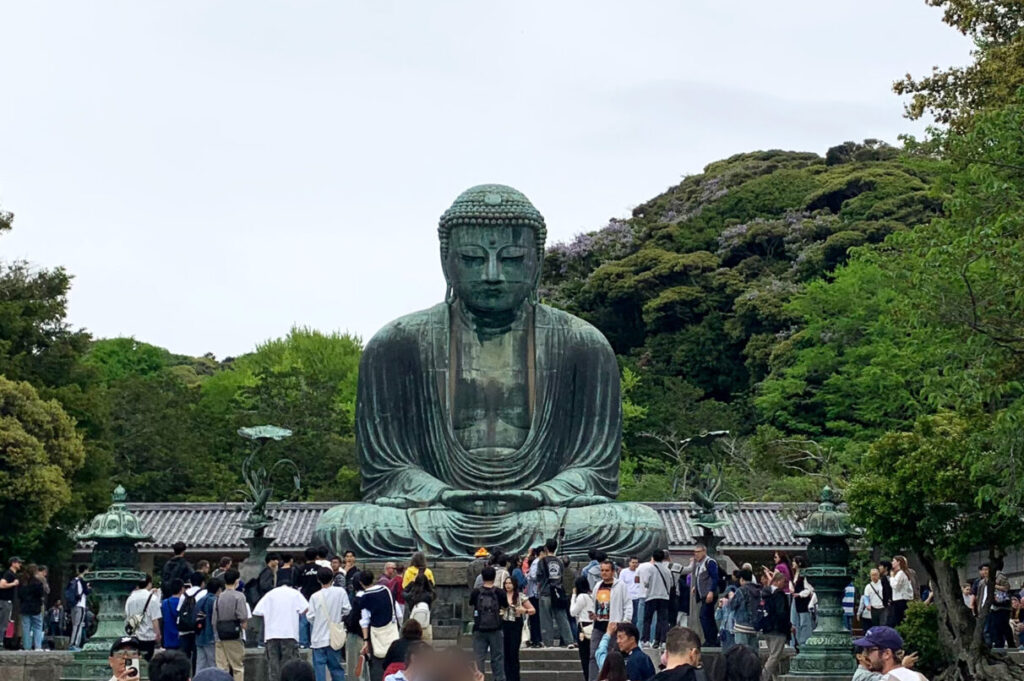
C. Great Buddha, Kotoku-in Kamakura Daibutsu
A well-known Japanese female poet once wrote a poem saying how strikingly good-looking the Great Buddha of Kamakura is. If you come here, be sure to take a good look at his face! (marked as C on the map)
They say construction of the Great Buddha began in 1252, though the details still remain a mystery. Between the 15th and 16th centuries, typhoons and earthquakes destroyed the building that once housed the statue. It fell into disrepair for a while, but was restored in 1795 during the Edo period—and that’s the version we see today.
You can see the foundation stones of buildings around the Great Buddha.
Detore Point ❶: Authentic Souvenir Shop, Sankaido
Sankaido (marked as ❶ on the map) is a authentic souvenir shop located right in front of the main gate to the Kamakura Great Buddha.
If you’ve been thinking that Japan’s tourist spots are getting a bit too polished and all starting to feel the same, this place is for you.
It’s full of classic, old-school souvenirs like replica swords, throwing stars, and samurai goods. Definitely a spot to check out—you never know what fun and quirky finds you’ll come across!
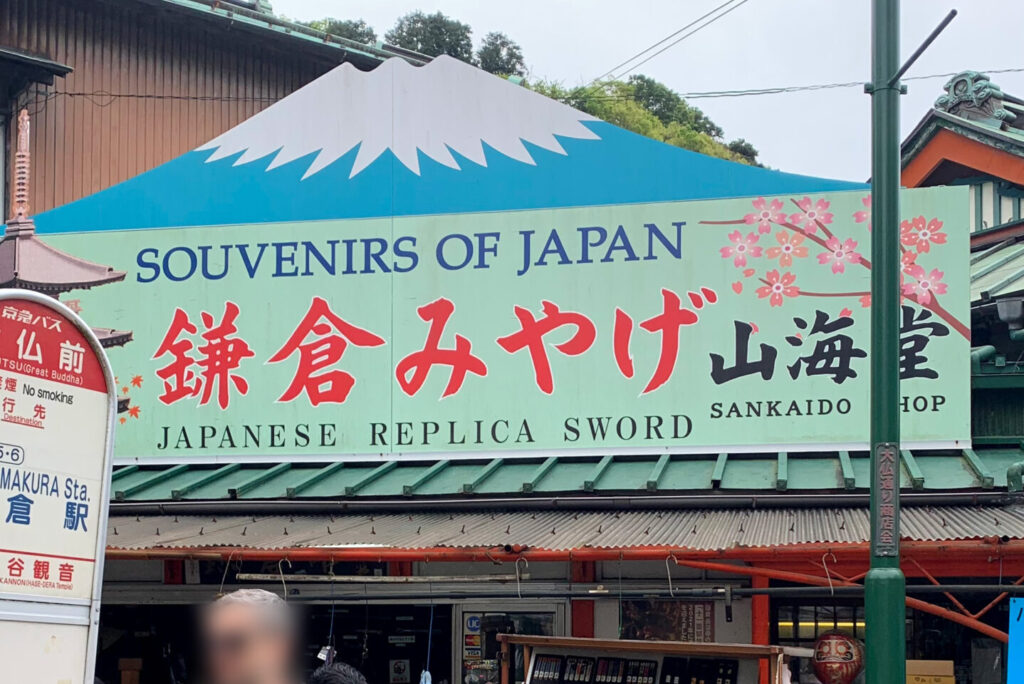
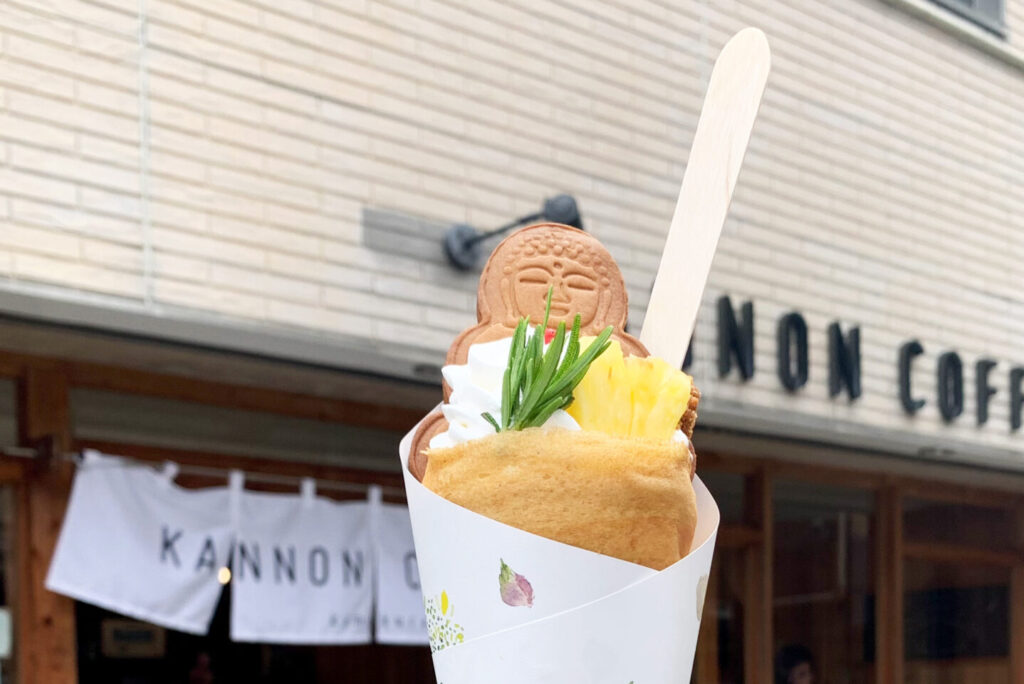
Detore Point ❷: Great Buddha Crepe, Kannon Coffee
On the way to the Kamakura Great Buddha —or maybe on the road to the flower-filled Hasedera Temple—you’ll come across Kanon Coffee. (marked as ❷ on the map)
While their coffee is great, the real star here is their crepe, which comes with a cookie shaped like the Great Buddha himself. Whether you stop by on your way there or on your way back, don’t miss the chance to take a big bite out of this adorable Buddha treat!
E. Surfing and J-POP Mecca, Yuigahama Beach
Yuigahama Beach (marked as E on the map) , part of the Shonan Coast, is well known as a surfing hotspot. But back in the ’90s, during Japan’s bubble economy, it was more than just that — it was the place to be. It showed up in movies, got sung about in J-pop, and had a special kind of buzz.
If you are a fun of Southern All Stars, J-POP Band, this area perfectly captures the vibe of their music.
Well, without thinking too much about everything, don’t forget to just take it easy and walk along the beach. When you’re surrounded by the sound of the waves and the sea breeze, doesn’t it almost feel like you’re becoming a philosopher?
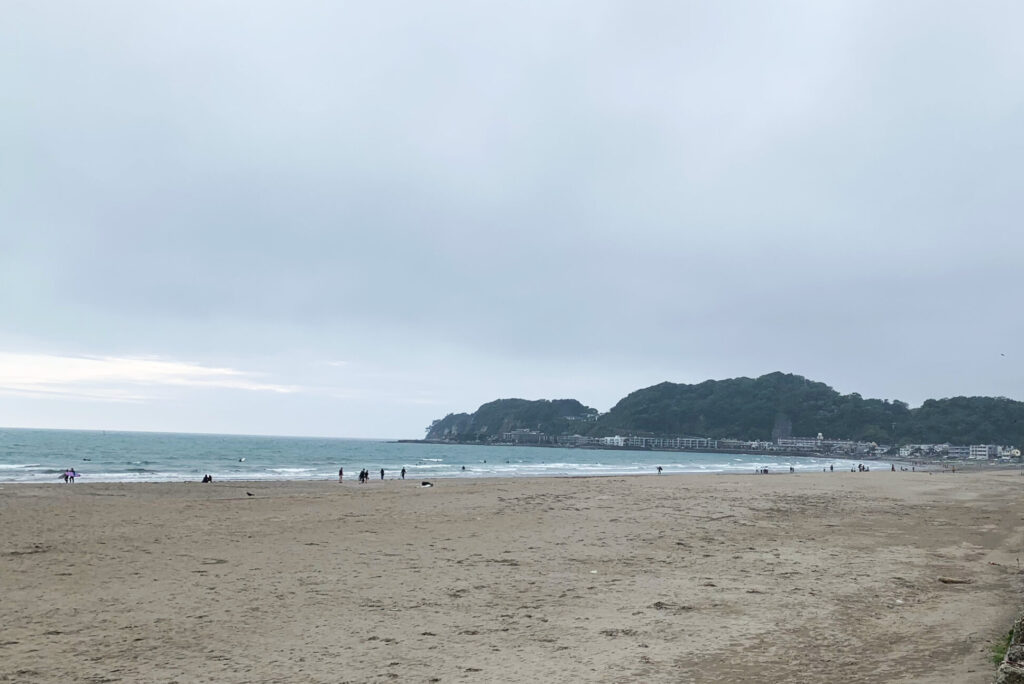
The next spot is a bit of a walk, so let’s hop on the Enoden. It takes about 20 minutes from Yuigahama Station (marked as ❹ on the map) to Kamakura KōKō-mae Station (marked as E on the map). Once the train leaves the town area, it runs along the coast—As the train sways along the coast, just letting yourself relax and watching the scenery drift by is a pleasure in itself!
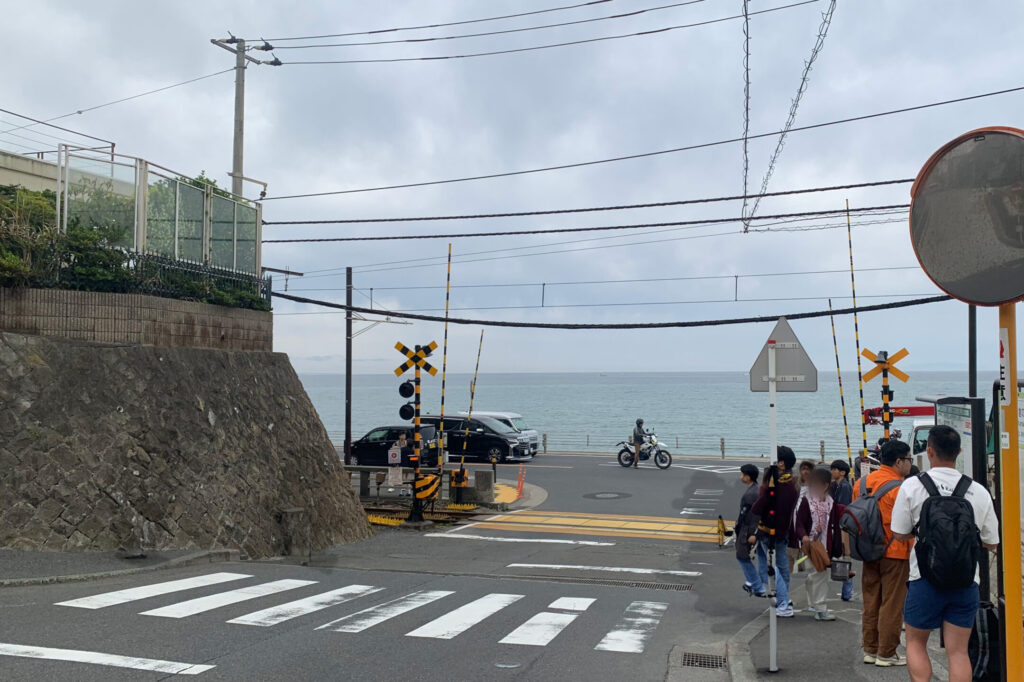
F. Railroad Crossing from Comic Slam Dunk
If this photo rings a bell right away, congrats—you’re a manga enthusiast (a real otaku!)!
This is a scene straight out of the opening of Slam Dunk, the legendary basketball manga loved not just in Japan but all around the world. It was shot right by Kamakura Kōkō-mae Station (marked as F on the map) on the Enoden Line. If you’re visiting Kamakura, this spot is a must-see! .
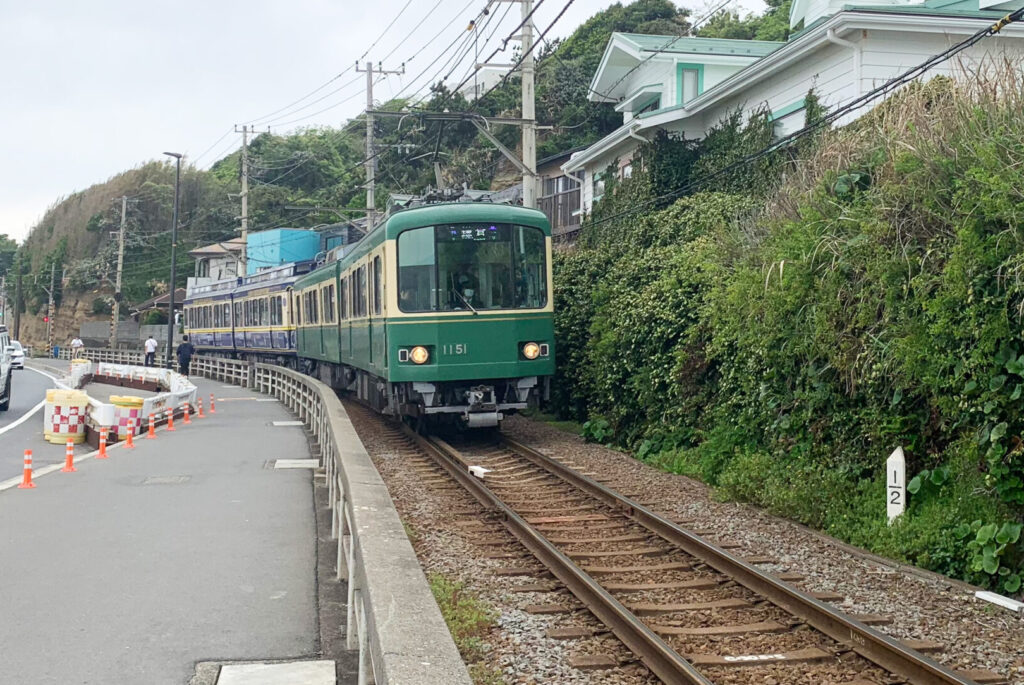
If you’ve got a bit of time, why not take a stroll along the tracks near this station?
They run right by the coast, and it’s a lovely walk—not just for train buffs. There’s something really nice about watching the trains go by as you walk, with the ocean in the background. Just soaking it all in, without thinking too much—it’s a pretty special vibe, don’t you think?
Let’s hop back on the Enoden and head straight to Kamakura Station. Our next destination is just a short walk from there.
G. Birthplace of Samurai Rule, Turugaoka Hachiman-gu (Shrine)
Tsurugaoka Hachimangu (Shrine) (marked as G on the map) was established in 1180 by Minamoto No Yoritomo, the founder of the Kamakura shogunate—the first government in Japanese history ruled by Samurai. The shogunate was developed around this very shrine, and it’s said that the government itself was located nearby.
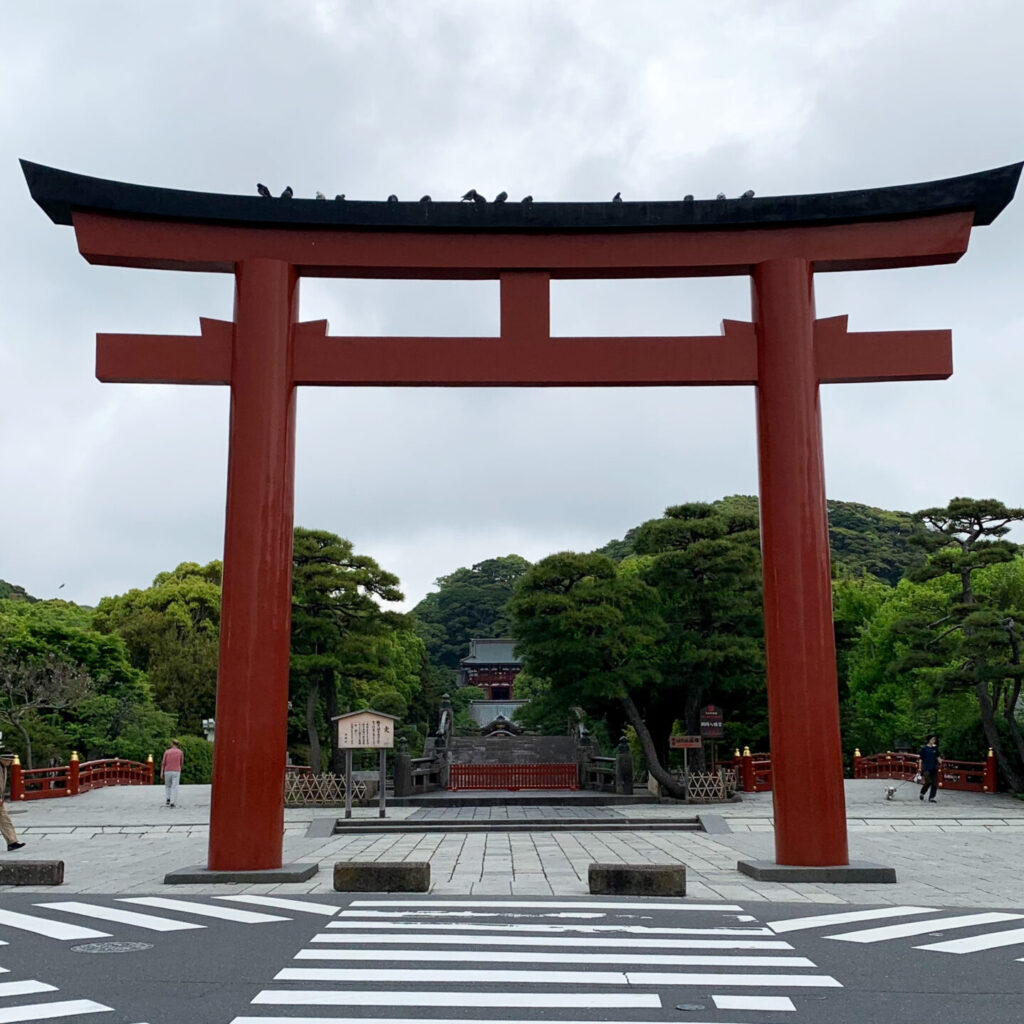
The shrine is also known as a Powerful Spiritual Spot, built in a place surrounded on three sides by mountains with strong Ryumyaku (龍脈) (Dragon Veins)—natural energy lines that flow through the land. This area is considered a Ryūketsu (龍穴) (Dragon Hole), where the earth’s energy gathers.
When you step into the shrine grounds, you’ll definitely feel something different from the rest of the city.
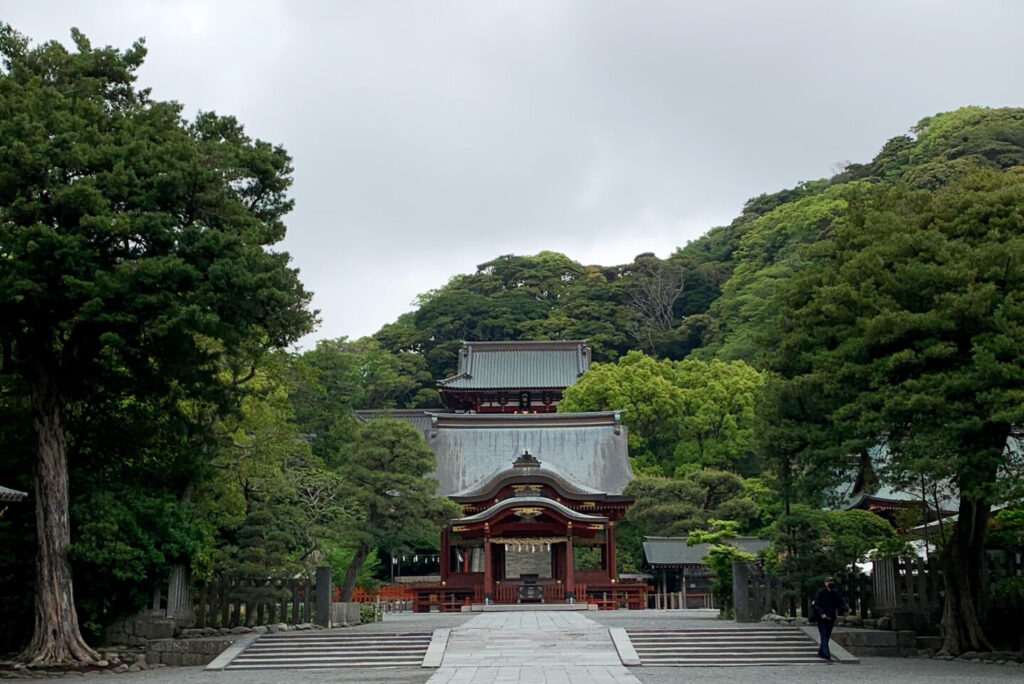
Kamakura Station is just a short walk from Tsurugaoka Hachimangu. But on the way, it’s worth taking a stroll through Komachi Street (marked as ❺ on the map), a lively area lined with shops—perfect for picking up some souvenirs or taking a little break.
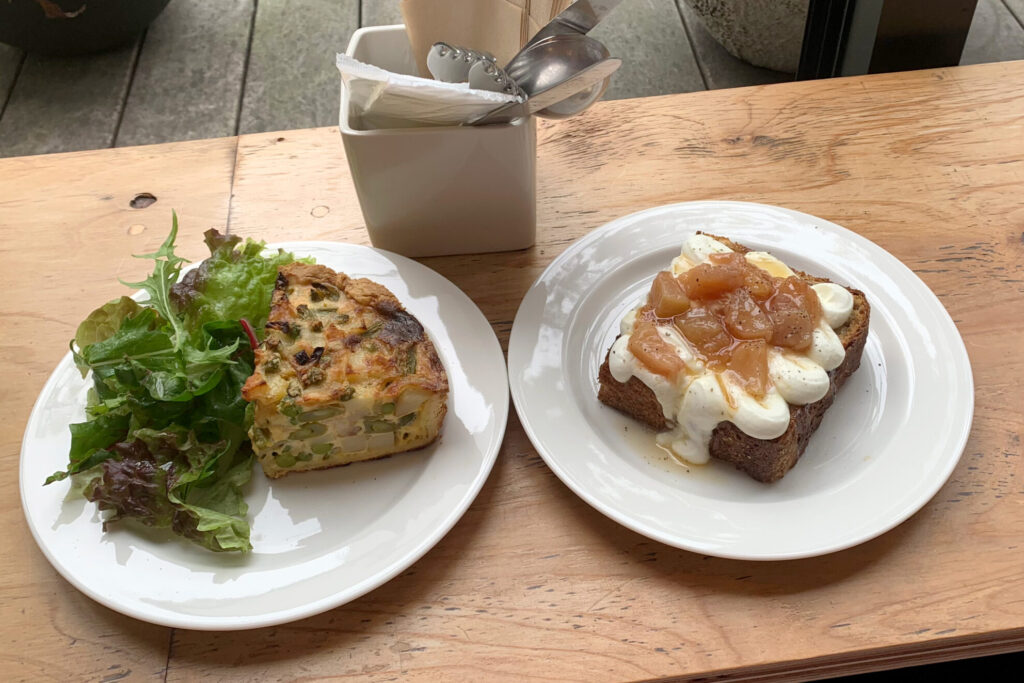
Detore Point ❸: Your Neighborhood Cafe & Deli in Kamakura, Food Stand Magali
A cozy little café Magali near Kamakura Station serving coffee, handmade sandwiches, open-faced toasts, and quiches, etc. The food is simple but satisfying, with generous portions that make it perfect for breakfast or lunch.
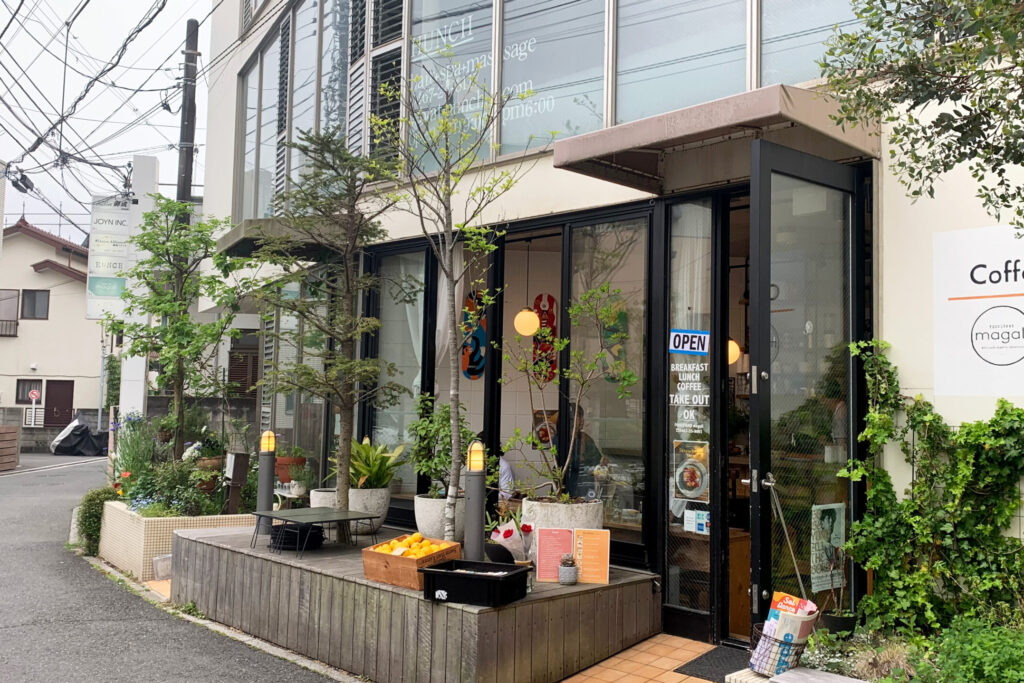
It opens at 7 a.m., so it’s a great spot to stop by for a tasty breakfast after an early morning walk around town.
Check Out: Local Favorites, Nama Shirasu-don
Nama Shirasu-don is a simple Japanese rice bowl topped with tiny fresh raw fish called Shirasu. Definitely different ffrom regular sugar, this delicate Nama Shirasu has a subtle sweetness with a rich, refined flavor.
As you walk around Kamakura, you’ll notice that many places serve them, but it’s not something you often see outside of Kamakura. There’s actually a seasonal ban on shirasu fishing—from January to March—and sometimes boats can’t go out due to the weather, so just keep that in mind if you’re hoping to try it.
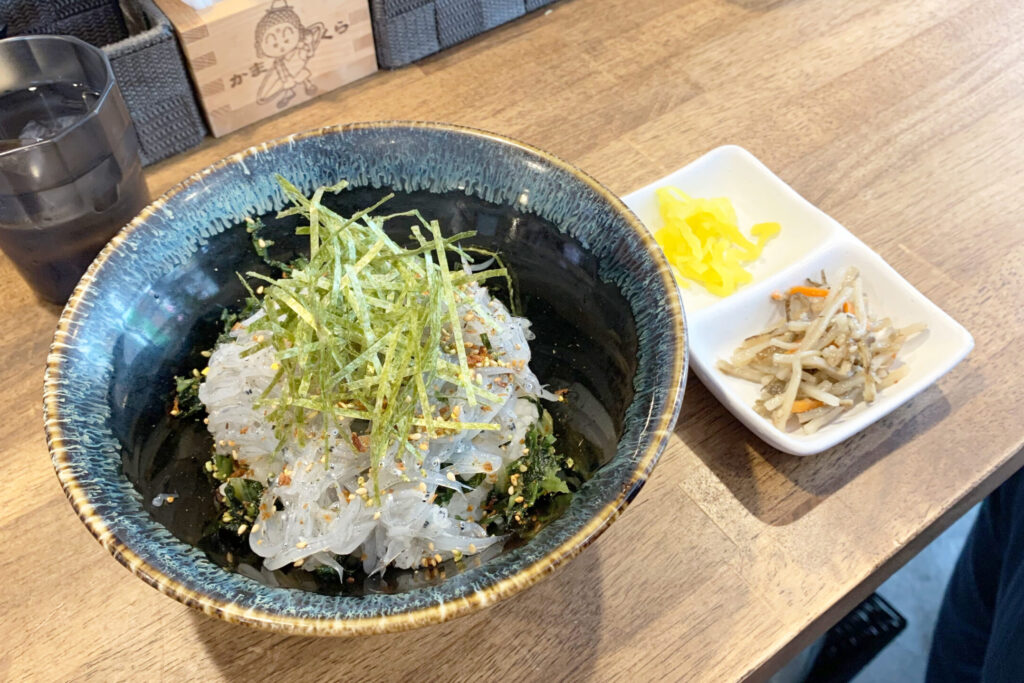

Running along the breezy, wide-open beach feels amazing. The sand, the sea, the salty air—it’s just a great place to be. Nothing beats a cold beer after working up a sweat. They’ve got some solid local brews around here too—pretty chill spot, honestly.
I heard this used to be a classy town where writers and artists liked to live. Even now, when you walk around, you’ll spot tasteful old buildings and cozy little cafés tucked away in the residential streets. Definitely the kind of place that makes you wanna stick around for a while.
